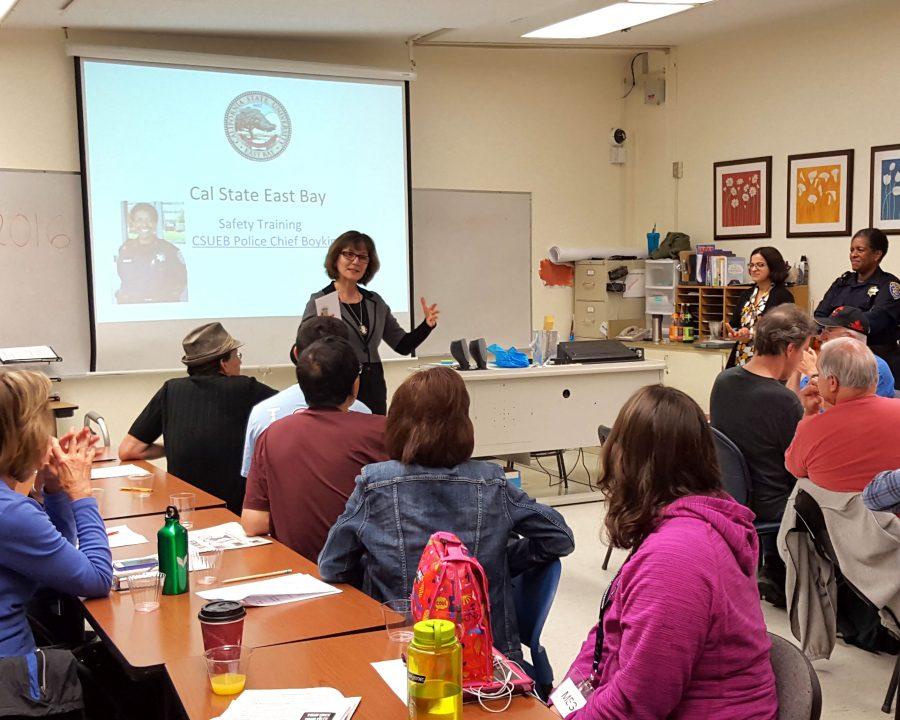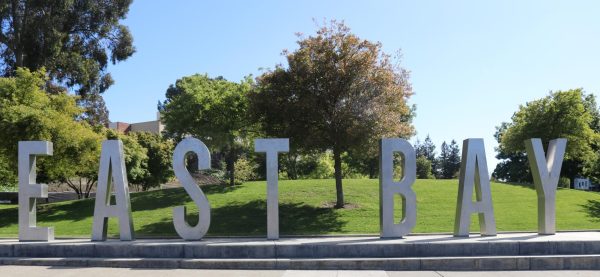Aphasia program educates survivors
June 1, 2016
Campus safety is of top priority, and the Aphasia Treatment Program, in collaboration with CSUEB Police Chief Sheryl Boykins, hosted a personal safety presentation to survivors of strokes and traumatic brain injuries on May 23.
According to Clinical Supervisor and Director of the ATP at CSUEB, Ellen Bernstein-Ellis, “Aphasia results from damage, usually to the left side of the brain and most typically from strokes or traumatic brain injuries.”
Bernstein-Ellis also said nonfatal violent crimes against disabled individuals is twice as high as those in the nondisabled community. The primary reason is the stigma that surrounds aphasia, as many people think they are less intelligent than people without disabilities; however, it is just the opposite.
“People with aphasia have their intelligence in tact,” Bernstein-Ellis said. “It is not a disorder of intelligence. Aphasia masks a person’s confidence, however, it is a communication issue not one of intelligence. Just like you need a ramp for wheelchairs, for aphasia you need a communication ramp.”
In order to beef up the communication of how to be safe, the department and some of its graduate students helped make Boykins’ presentation “aphasia friendly” by making the text bigger and more legible, as well as adding correlating visuals to the topics.
Bernstein-Ellis said that the CSUEB ATP serves about 35 individuals and more that come into the clinic for treatment. This is the twentieth year of the program, that was started in 1996 by Professor Emeritus Jan Avent to provide group treatment that wasn’t available at the time, according to Bernstein-Ellis.
She also said that one of the young stroke survivors mentioned to her a while back that she had concerns for her safety, which is when Bernstein-Ellis began to look for classes that teach personal safety to stroke and traumatic brain injury survivors.
“I only found one course for stroke group personal safety in Gainesville, Florida,” Bernstein-Ellis said. “This was the only option to create our own.”
This led to the collaboration between the communicative sciences and disorders department, headed by Shubha Kashinath, and Boykins. It was Kashinath who reached out to Boykins for help on the project. This coincides with June being the National Aphasia Awareness Month, which aims to inform people about the communication disorder and debunk myths about aphasia.
Boykins also brought in a personal alarm and allowed attendees to try it as an example of a device that can help against attacks. Ellis-Bernstein said the focus of the program and the event was to form strategies and skills to help survivors communicate.
















